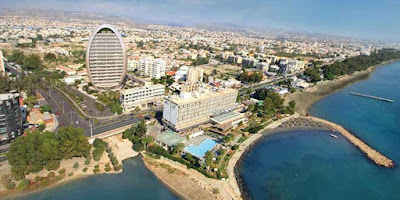The ultimate cruise in Europe's most beautiful country
"This is sick," shouted Edward, as our RIB speedboat scudded and thumped over the sea at 45mph.
I was feeling genuinely queasy, but my 11-year-old son was giving our high-adrenalin ride in the Lofoten archipelago the ultimate compliment in kid-speak.
And he was right: it was thrilling. Dressed in thermal overalls to insulate us from the Arctic elements, we darted in and out of rocky morasses looking for seabirds, and zipped along shorelines where slivers of white-sand beaches lay beneath jagged peaks.
After a pit stop at an island fishing community for refreshments of salmon rolls and glasses of juice, we raced across the open sea back to the warmth and comfort of our ship, MS Nordkapp.
My family was on a four-night journey with Hurtigruten, from Tromsø down the Norwegian coast to Bergen. Although we were travelling in the school summer holidays, Edward and his brother Arthur, 14, were among only 20 or so children on board.
I wasn’t surprised. Hurtigruten bills its coastal trips as voyages, not cruises. While primarily used by tourists nowadays, the fleet also provides an essential ferry service for local passengers and cargo. Its ships are modest in size – Nordkapp can take 590 passengers – and they are civilised rather than ritzy affairs, devoid of the shows and kids’ clubs found on conventional, family-oriented cruises.
Instead, the main entertainment is the spectacular scenery. With our route almost always in sight of land, we spent much of our time out on deck or in the main lounge with its wrap-around windows, taking in mesmerising views of spiky, snow-capped mountains above a glassy sea, and, further south, of idyllic-looking shoreside settlements with ochre huts and little jetties.
Our full-board package covered dining in the main restaurant only and the food was largely a success. Most meals were buffets, with classic Norwegian dishes to the fore: salmon and cod served in lots of different ways and – less of a hit with the boys – marinated herring and brunost (a sweet brown cheese).
Each day, crew members laid on cultural presentations about the current destination. None were aimed at children (although this year some ships have introduced the Young Explorers’ Programme – see below), and some offerings, such as lectures on Ibsen and Grieg, were too highbrow for me during a holiday, let alone the boys.
Our ship made fairly frequent stops at ports of call along the coast to let passengers on and off and load and unload cargo. At fishing hamlets we were often moored for just 30 minutes, with time only for a quick stroll and to check the eye-poppingly high prices in the supermarkets. In Trondheim, Norway’s third largest city, we had a few hours to explore and went on a self-guided tour before breakfast – much to the boys’ dismay.
Most of the organised excursions we took were far more rewarding. The RIB adventure got top billing from the boys, but the sea-eagle safari was a hit, too. Just north of the Lofoten Islands we transferred to a basic small craft for sightseeing. Birds of prey were soon swooping down on their vast wings from the lofty cliffs to pluck fish from the water.
Further south, we made a long but worthwhile boat trip out to the remote Vega archipelago, a multitude of low-lying islands, islets and skerries on Unesco’s World Heritage List. At Nes, a picturesque fishing village on Vega, the main island, we learnt about the painstaking process of eiderdown cultivation – carried out since Viking times – and about how A-framed huts are built to lure wild ducks to lay their eggs.
A Hurtigruten coastal voyage isn’t going to suit every family. For the most part, ours was a sedate experience and a grown-up atmosphere prevailed on board. But that suited us just fine, as did the short duration. Our boys would have grown restless on the complete coastal journey between Bergen and Kirkenes.







Comments
Post a Comment